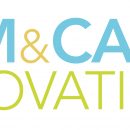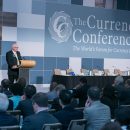11 August, 2010
In recent months there have been a number of articles related to the cost of creating and maintaining cash in society. On the one hand it should be fairly obvious that each note and coin in circulation has an inherent cost of manufacture. What is less clear is the ongoing cost of circulating authentic and fit notes and coins. First, let’s take a look at the obvious – what does it cost to make a note or a coin. The answer may not be as simple as the question. In particular note manufacture can have a huge cost variance, nominally attributed to the substrate (usually paper, cotton, plastic or combinations of these). Next comes the design costs – usually artists are employed competitions are held to arrive at the “theme” for a new series – the selected artists are then paid for their original work. Following from the design efforts comes the cost of reproduction of the designs – one colour, two or more will make the printing costs vary considerably. Does the note have a border or is the design a “bleed” off the edge of the substrate – again a variance in cost. Next is the choice of inks, which are closely guarded recipes in most cases. In the design phase the choice of authentication features can drive the cost of a note from a few cents to a much higher figure. Even more closely guarded are the secrets of authentication features. Suffice to say that there are ones that we can see and/or detect with our senses or with the aid of publicly available technology. Then there are the authentication features that are not publicized and are usually the strict domain of the issuing authority. These are the highest level of assurance that we have against the otherwise rampant growth of counterfeiting.
Coins have similar costs, but in reality are much easier to control as they don’t need to employ strong authentication features (most counterfeiters realize that a counterfeit coin will likely cost almost as much to produce as the face value of the authentic version). the cost of the coin medium is usually the largest cost component and that can vary depending on the fluctuating costs of metals. There are also costs of artwork design and minting, but because coins have a much higher life expectancy than paper notes, they are usually replaced much less frequently.
Now we move into the less obvious costs of currency. First is the cost of production – how much is required and how often should it be produced. In the modern world, currency not only circulates much faster than it used to, but it commonly circulates much more widely than it did in the past. Where a Central Bank may have once been able to rely on standing orders with manufacturers, such simplistic methods can now often lead to either dramatic shortages or gross over-abundance. It is more common today to see Central Banks starting to employ complex mathematics and monitoring tools to control and predict ordering cycles and the placement of reserves throughout a country to meet predictive demands with optimised supplies.
Last but not least in the list of maintaining currency availability are: transportation (getting money to ATM’s, Branches and retailers and then depositing it back to the Banks), detecting and separating authentic from counterfeit, destroying the unfit; physical handling by suppliers (packaging, etc.), theft, criminal use, underground cash-based economies (those last three directly influence the daily cost of retail goods) and so on.
In closing, it is a good thing to understand the cost of currency so that we are aware of it’s value to us. This is especially true when learning of various initiatives that would have us believe that a cashless society is less costly. This may or may not be true – I maintain that we do  not yet understand the true and total costs of “cashless” and therefore cannot categorically state that we need to eradicate cash from society as quickly as some would like.
References:
European Union Report on Cash Recycling
Basel III, the Banks, and the Economy
The Future of Cash and Payments
Counterfeit Deterrence in Canada
Banknote Distribution, Circulation & Destruction in the UK
US Federal Reserve Currency Recirculation Policy










